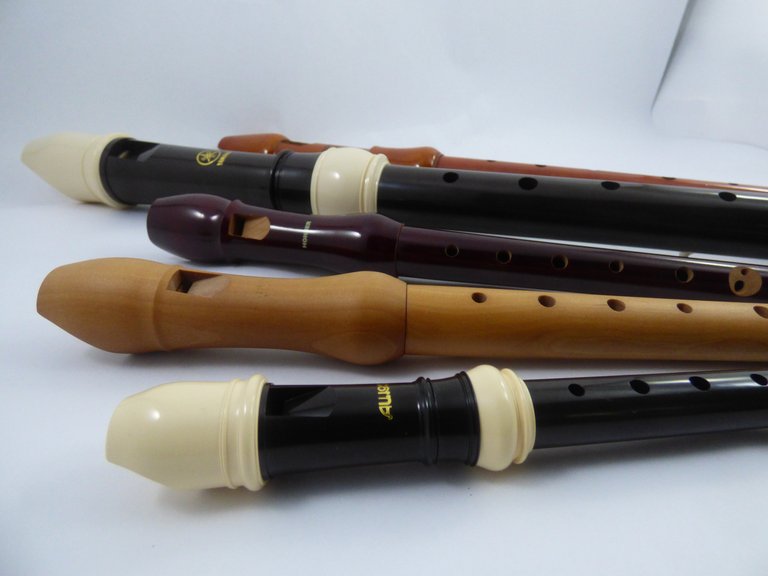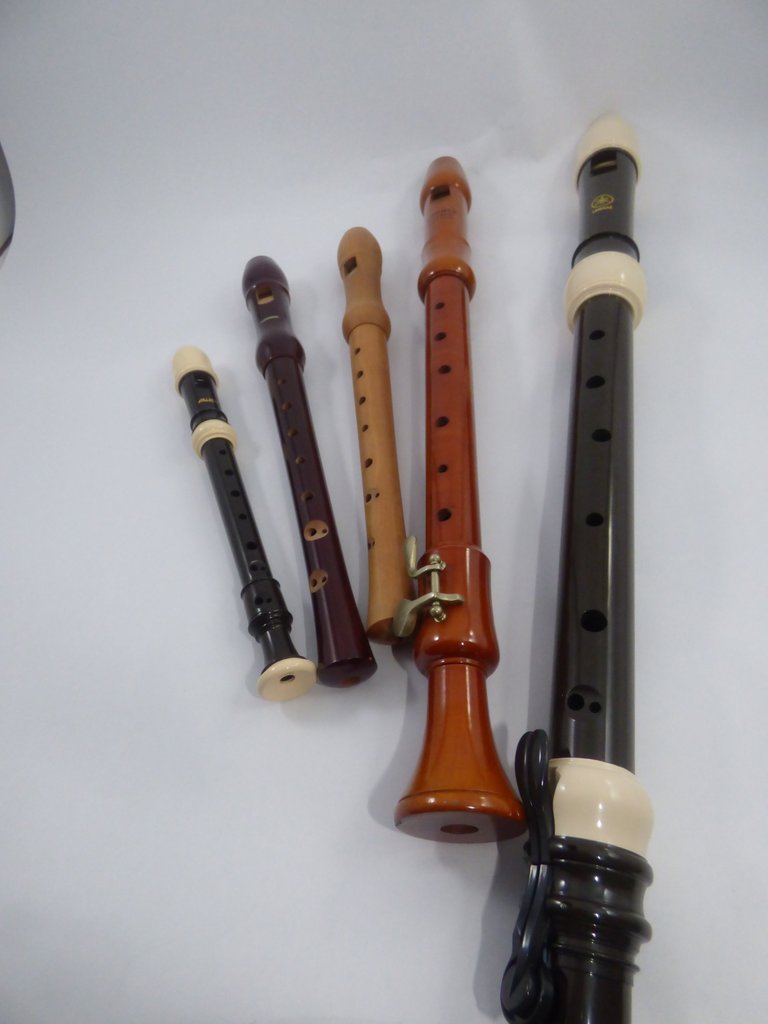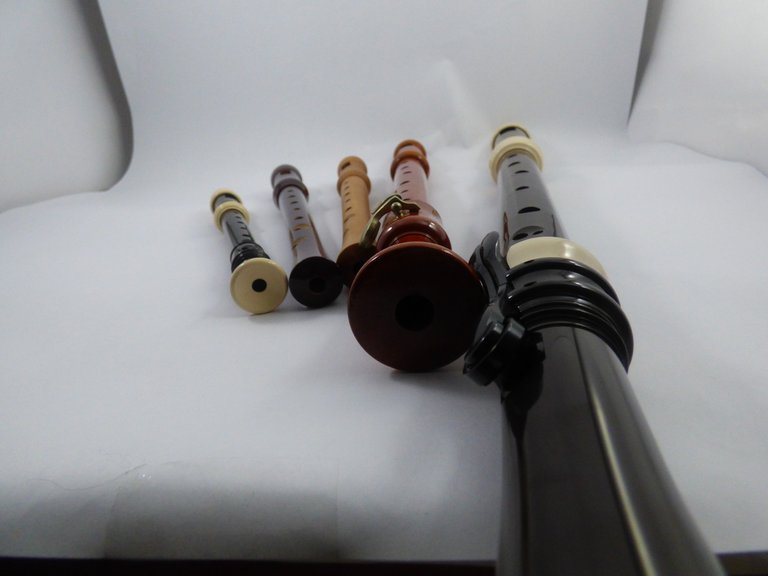Saludos, comunidad, este es un post de apreciación a las flautas dulces a través de unas fotos que tomé, espero le ayude a las personas apasionadas a estos instrumentos. No es un post publicitario de marcas, simplemente las nombro para que sirva de “review” en caso de que quieran invertir en una de ellas.
Greetings, community, this is a post of appreciation to the recorders through some pictures I took, I hope it helps people passionate about these instruments. It is not a brand post, I simply name them to serve as a "review" in case you want to invest in one of them.
EL EQUIPO Y EL SET FOTOGRÁFICO // THE EQUIPMENT AND THE PHOTOGRAPHIC SET
En esta ocasión tomé personalmente TODAS LAS FOTOS QUE VEN ES ESTE POST hace algunos años con la cámara Panasonic Lumix DMC FZ70 (aclaro esto acá para no repetir la información sobre la fuente como pie de foto a cada imagen). Debo mencionar que esa fue una cámara muy buena, que cuando salió al mercado era bastante económica, en comparación a las profesionales o de lentes desmontables. Esta cámara en cambio es de objetivo fijo, tipo puente, pero de grandes dimensiones y para trabajos exigentes. Tiene ajustes manuales de enfoque, exposición y otras configuraciones manuales.
Para la sesión fotográfica busqué en #youtube cómo hacer una caja de luz, así que con cartones recortados de cajas viejas, láminas de papel bond blanco y cinta adhesiva diseñé un espacio más o menos decente, como lo verán en las fotos. Para la iluminación me serví de una simple lámpara de mesa con luz blanca, colocada detrás de las láminas, así como de las fuentes de luz de la casa, traté de no utilizar el flash de la cámara. Logré hacer muchas más, incluso a otros instrumentos, pero hoy comparto solo estas para unificar la temática.
This time I made all the pictures that you see in this post some years ago with the Panasonic Lumix DMC FZ70 camera. It was a very good camera, which when it came on the market was quite economical, compared to the professional or detachable lenses. This camera instead is a fixed lens, bridge type, but of large dimensions and for demanding work. It has manual adjustments of focus, exposure and other manual settings.
For the photo session I looked in #youtube how to make a light box, so with cardboard cut out of old boxes, white bond paper sheets and adhesive tape I designed a more or less decent space, as you will see in the photos. For the lighting I used a simple table lamp with white light, placed behind the sheets, as well as the light sources in the house, I tried not to use the camera flash. I made more pictures, even of other type of instruments, but I only share this to unify the theme or the subject of the post.
LAS MODELOS // THE MODELS
En la imagen de abajo verán en orden de izquierda a derecha: una sopranino, dos sopranos, una alto y una tenor:
In the image below you will see in order from left to right: one sopranino, two sopranos, one alto and one tenor:
El registro y características de cada tipo de flauta:
The register and characteristics of each type of recorder:
• La sopranino es una flauta dulce diminuta, está en tono de Fa, la de la foto es una “Aulós” de resina, son japonesas, de alta calidad en sonido.
The sopranino is a tiny recorder, it is in F tone, the one in the picture is a resin "Aulós", they are Japanese, high quality in sound.
• La soprano es nuestra popular flauta dulce afinada en Do, esa que acostumbran a usar en las escuelas, que suele ser amarilla, tanto las Hohner, como las Yamahas y las Aulós producen los mejores sonidos en resinas. Lamentablemente cualquier flauta dulce de poca calidad de fabricación o de cualquier marca extraña suele estar desafinada, es casi una ley, y son terribles los resultados, por ser un instrumento de sonido tan puro, con pocos armónicos, debe estar lo más perfectamente afinada posible. En la imagen pueden ver dos de madera, una Hohner barnizada de fábrica, lo que ayuda a los principiantes a que les dure más el instrumento, y al lado una Sharp, lamentablemente esta última no iguala a la calidad de la Hohner, pero son más económicas en comparación y producen una afinación más estable que las populares más económicas plásticas. El hecho de que se puedan separar, especialmente la cabeza del cuerpo permite ajustar la afinación. Aunque algo que debemos conocer es que toda flauta de madera requiere calentarse a la temperatura del cuerpo del ejecutante, esto se debe hacer lenta y progresivamente, simplemente sosteniendo la flauta con las manos durante un rato. Eso se debe hacer antes de tocar, no solo para que la madera no sufra y se agriete sino porque como cambia el tamaño de la flauta, entonces cambia la afinación. Yo suelo usar bastante la Hohner amarilla de principiante para practicar y tocas cosas breves y rápidamente porque no quiero desgastar las de madera usándolas demasiado.
The soprano is our popular recorder tuned in C, the one used in schools, which is usually yellow, both the Hohner, the Yamahas and the Aulós produce the best sounds in resins. Unfortunately, any recorder of poor quality or of any strange brand is usually out of tune, it is almost a law, and the results are terrible, for being an instrument of such pure sound, with few harmonics, it must be as perfectly tuned as possible. In the picture you can see two woods, a Hohner varnished factory, which helps beginners to make the instrument last longer, and next to it a Sharp, unfortunately this last one does not equal the quality of the Hohner, but they are cheaper in comparison and produce a more stable tuning than the popular cheaper plastic ones. The fact that they can be separated, especially the head from the body, allows the tuning to be adjusted. Although one thing we should know is that every wooden recorder requires warming up to the temperature of the player's body, this should be done slowly and progressively, simply by holding the recorder with your hands for a while. This should be done before playing, not only so that the wood does not suffer and crack but also because as the size of the recorder changes, so does the pitch. I usually use the yellow Hohner as a beginner to practice and you play short things quickly because I don't want to wear out the wooden ones by using them too much.
• La alto, o contralto, está afinada en Fa, al igual que la sopranino. En la imagen una Hohner de madera, todas son excelentes, hay unas que traen un barnizado de fábrica, pero hay otras que no para más pureza de sonido, aunque requieren más cuidados. Las flautas dulces de madera producen mayor calidad en el timbre, pero requieren muchos trabajos, se deben secar bien antes de almacenarlas y no se deben someter a cambios bruscos de temperatura. Esta la adquirí usada porque suelen ser muy costosas en las tiendas, demasiado, para una persona sin recursos, como uno, así que tuve que tratarla con aceite de almendras que compré en una farmacia, aunque se puede usar aceite de linaza, el de almendras cuesta un poco más pero deja mejor olor y es más sutil con la madera, ojo, advertencia, no se debe impregnar de aceite el “corcho” o tacón de madera que está en el pico, donde se ejecuta el instrumento y tampoco los corchos de ajuste. Suele estar hecho de una madera distinta, más porosa, así que se puede ensanchar mucho y agrietar el pico.
The soprano is our popular recorder tuned in C, the one used in schools, which is usually yellow, both the Hohner, the Yamahas and the Aulós produce the best sounds in resins. Unfortunately, any recorder of poor quality or of any strange brand is usually out of tune, it is almost a law, and the results are terrible, for being an instrument of such pure sound, with few harmonics, it must be as perfectly tuned as possible. In the picture you can see two woods, a Hohner varnished factory, which helps beginners to make the instrument last longer, and next to it a Sharp, unfortunately this last one does not equal the quality of the Hohner, but they are cheaper in comparison and produce a more stable tuning than the popular cheaper plastic ones. The fact that they can be separated, especially the head from the body, allows the tuning to be adjusted. Although one thing we should know is that every wooden recorder requires warming up to the temperature of the player's body, this should be done slowly and progressively, simply by holding the recorder with your hands for a while. This should be done before playing, not only so that the wood does not suffer and crack but also because as the size of the recorder changes, so does the pitch. I usually use the yellow Hohner as a beginner to practice and you play short things quickly because I don't want to wear out the wooden ones by using them too much.
• La flauta tenor, esta última es una versión mucho más grande que la soprano, y está también en Do. Este modelo es Yamaha, en resina. Las llaves que se ven en la alto y en la tenor facilitan la digitación de las notas más graves. Este mecanismo tiene sus defensores y detractores en cuanto a si es conveniente para la salud o si es más cómoda. Hay fabricantes que lo resuelven cambiando un poco la fabricación del instrumento, los orificios. Pero en flautas muy grandes son inevitables, a menos que uno tenga las manos de “Elastic Girl”.
The tenor recorder, the last one is a much larger version than the soprano, and is also in C. This model is Yamaha, in resin. The keys that you see on the alto and tenor keys make it easier to finger the lower notes. This mechanism has its defenders and detractors as to whether it is convenient for health or more comfortable. There are manufacturers who solve it by changing a little the instrument's manufacture, the holes. But on very large recorders they are inevitable, unless one has the hands of "Elastic Girl".
Espero les sirva de ayuda, estoy a la orden para responder en los comentarios cualquier duda que tengan, mientras esté al alcance de mis conocimientos, soy un aficionado a estos instrumentos, pero me gusta investigar y leer para apreciarlos más.
Gracias por su atención y apoyo.
I hope it helps you, I am at your disposal to answer in the comments any doubt you may have, as long as it is within the reach of my knowledge, I am a fan of these instruments, but I like to investigate and read to appreciate them more.
Thank you for your attention and support.




Congratulations, your post has been upvoted by @dsc-r2cornell, which is the curating account for @R2cornell's Discord Community.
Enhorabuena, su "post" ha sido "up-voted" por @dsc-r2cornell, que es la "cuenta curating" de la Comunidad de la Discordia de @R2cornell.
Thank you very much!
¡Que interesante! No tenía idea de las particularidades de cada flauta ni de los cuidados que se les deben dispensar. Me encantó la forma sencilla y gentil con que explicas cada cosa. Saludos y bendiciones para tí.
Sí, solo las de madera son las que requieren más cuidado, las plásticas o de resina no tanto.
¡Excelente brou! ya te iba a preguntar si tenias la flauta alto y veo que si jejeje espero ver contenidos tuyos usando esa afinación de la flauta dulce.
¡Saludos!
Hola,sí, en efecto la tengo. Ya pronto lo haré. Gracias por tu comentario.